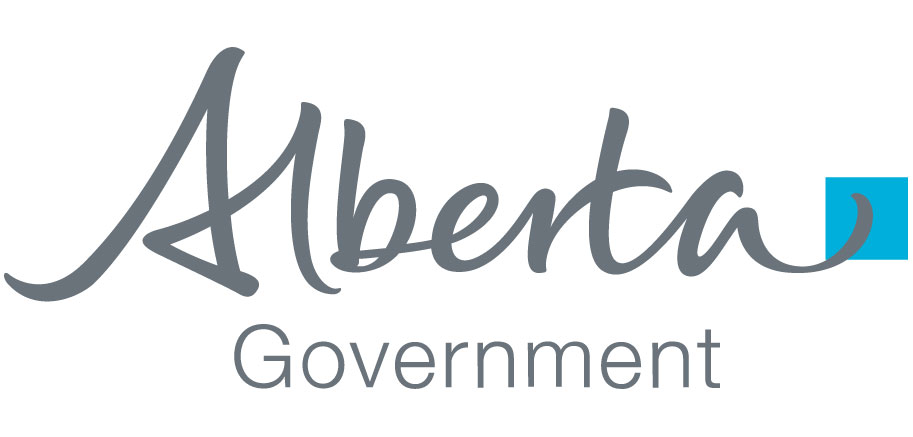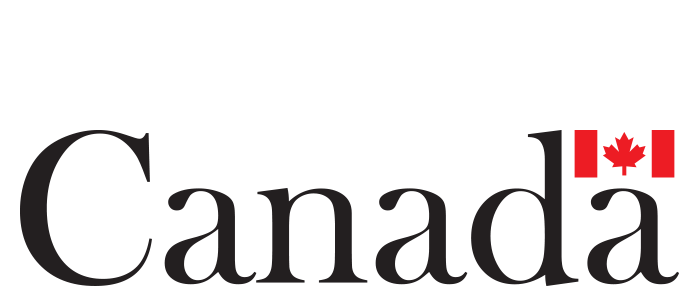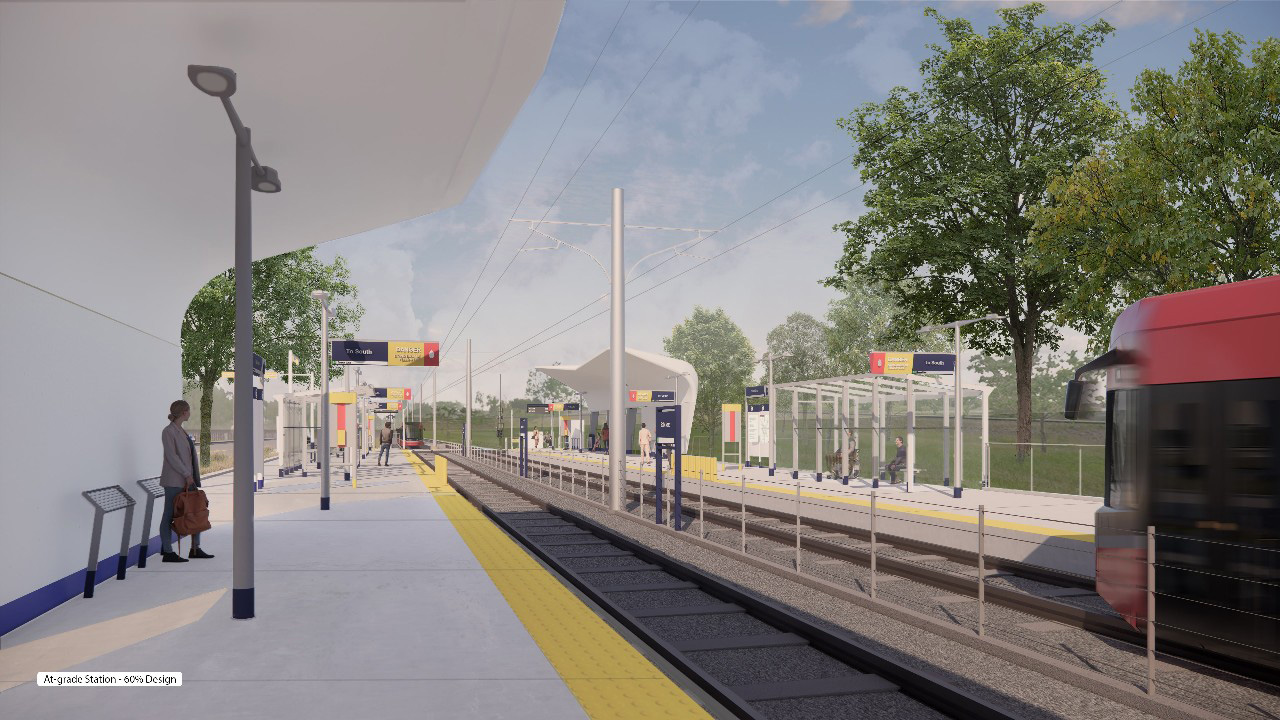
About Green Line
Project Status
Phase 1 of the Green Line LRT, from Shepard in the southeast to the Downtown has been approved with $6.248 billion in funding commitments from the City of Calgary, Province of Alberta, and Government of Canada.
The City of Calgary is responsible for delivering the project, with construction of the SE Segment now underway. Contracts are already being awarded to local construction companies, and more than $3 billion in additional tenders will be released to the market in 2025 and 2026.
Read on to learn more about:
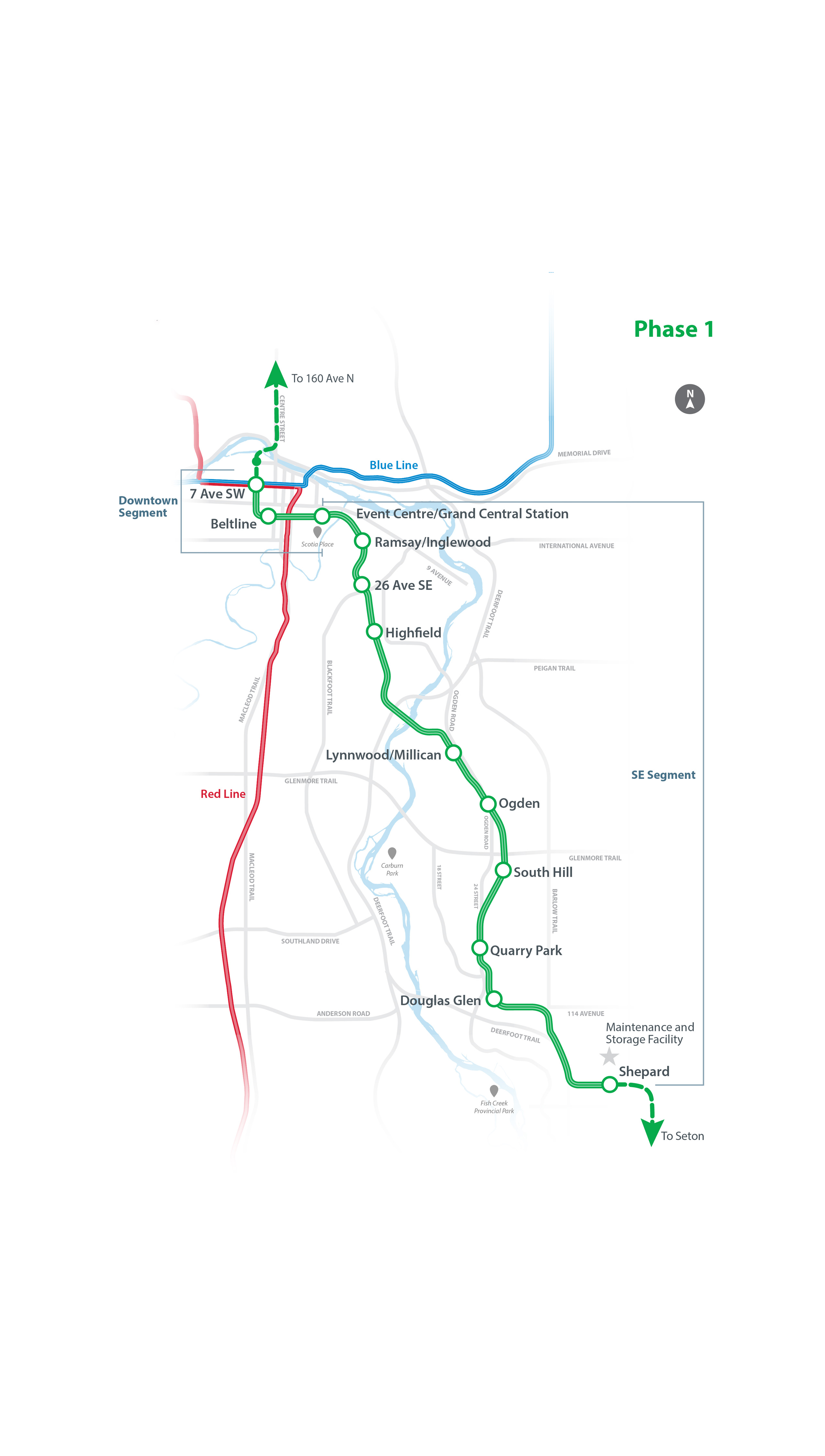
Phase 1
Phase 1 includes both the SE Segment and the Downtown Segment and will deliver:
- 17.2 kilometres of twin-track LRT infrastructure
- 12 new stations
- 3 Park and Ride lots
- 1 maintenance and storage facility,
- 28 new modern low-floor light rail vehicles
SE Segment
The SE Segment, from Shepard to the future Event Centre/Grand Central Station, will build the first 10 stations and 16 kilometres, before connecting with the future Downtown Segment and into the existing Red and Blue LRT Lines.
Construction on the SE Segment began in June 2025.
Downtown Segment
The City of Calgary is beginning work on a Functional Plan for the Downtown Segment, based on the Government of Alberta's plan and alignment, using 10 Avenue and 2 Street SW. The Functional Plan will advance design, validate the Province’s cost estimates, understand potential impacts to existing infrastructure and ensure the project is broadly supported by Calgarians prior to starting construction.
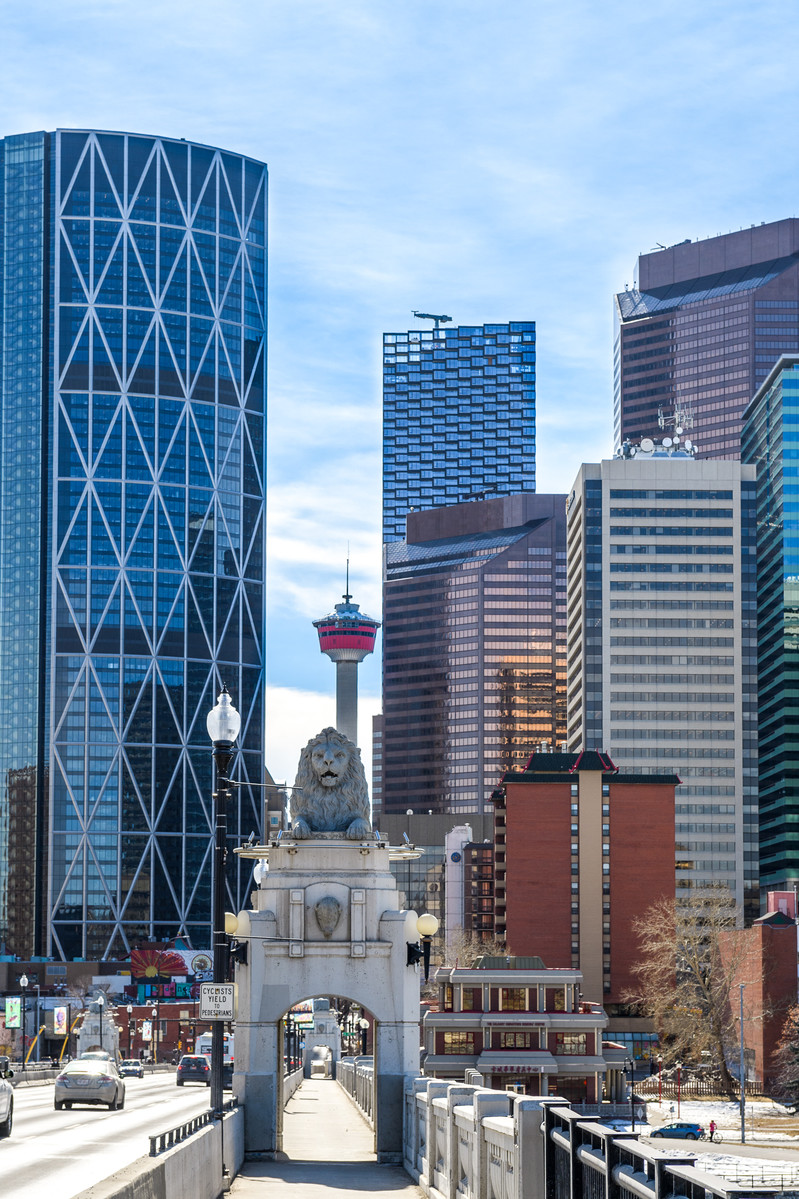
Benefits
The Green Line is a long-term investment in Calgary's future
The City of Calgary is regarded as one of North America’s best places to live, visit and do business. It is one of Canada’s largest cultural and economic centres and has undergone significant population and employment growth over the previous decades, with the population forecasted to double by 2076. Investment in public transit is essential to maintaining a high quality of life, a prosperous and competitive economic advantage and a sustainable environment.
Learn more about Green Line Benefits below.
Green Line Benefits
Transit network and ridership
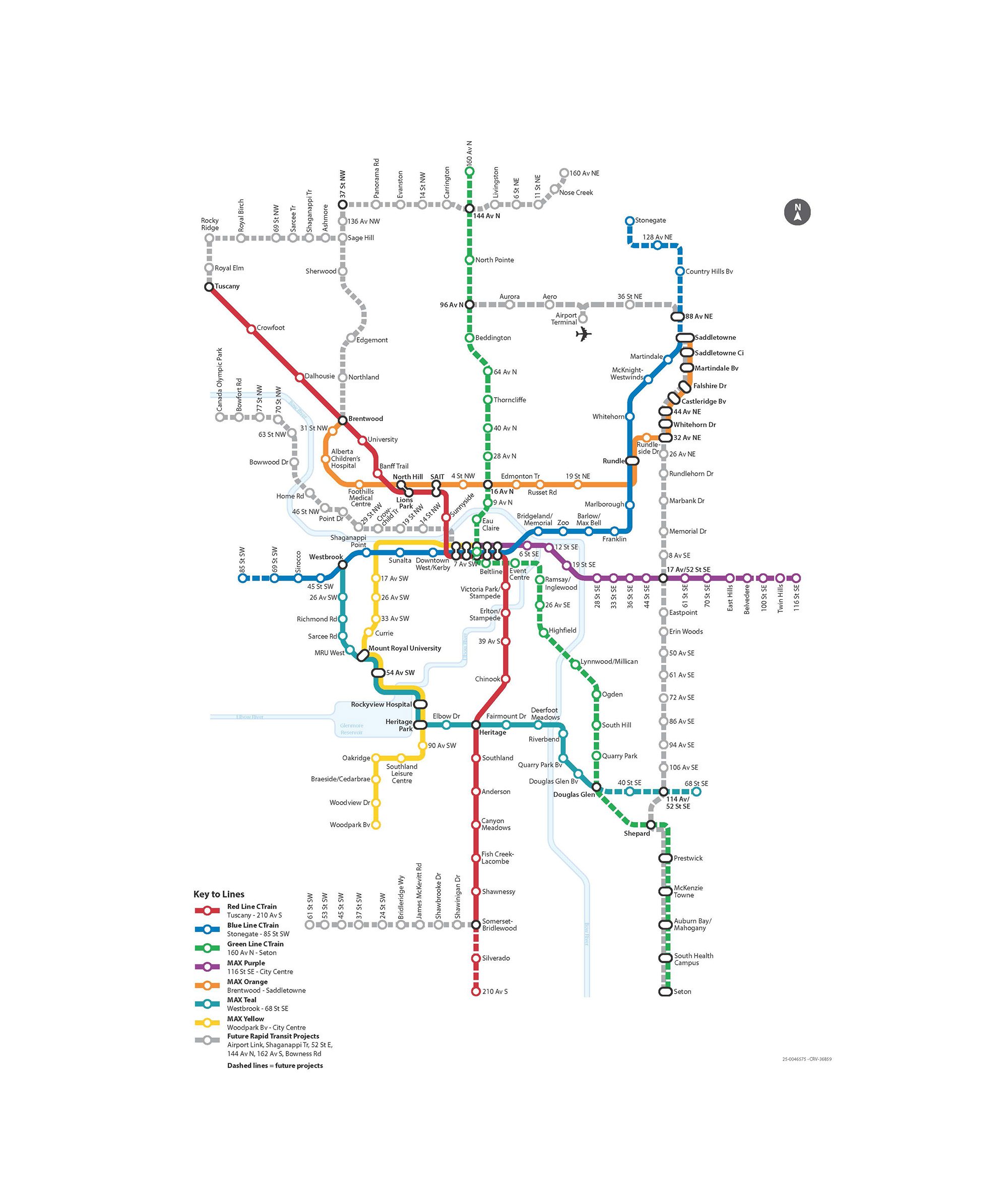
The Green Line LRT will deliver significant transportation benefits to Calgarians by expanding mobility choices and providing rapid and direct connections between the southeast and downtown.
Expand the Rapid Transit Network (RTN)
- The RTN forms the foundation of the transit system; it includes Light Rail Transit (LRT), Bus Rapid Transit (BRT) and MAX BRT lines.
- Green Line expands the RTN to the southeast and connects into other rapid transit lines:
- 2 LRT lines (Red and Blue lines).
- Multiple rapid bus lines including MAX Teal, Yellow and Purple.
Visit the Calgary Transit Network page for more details.
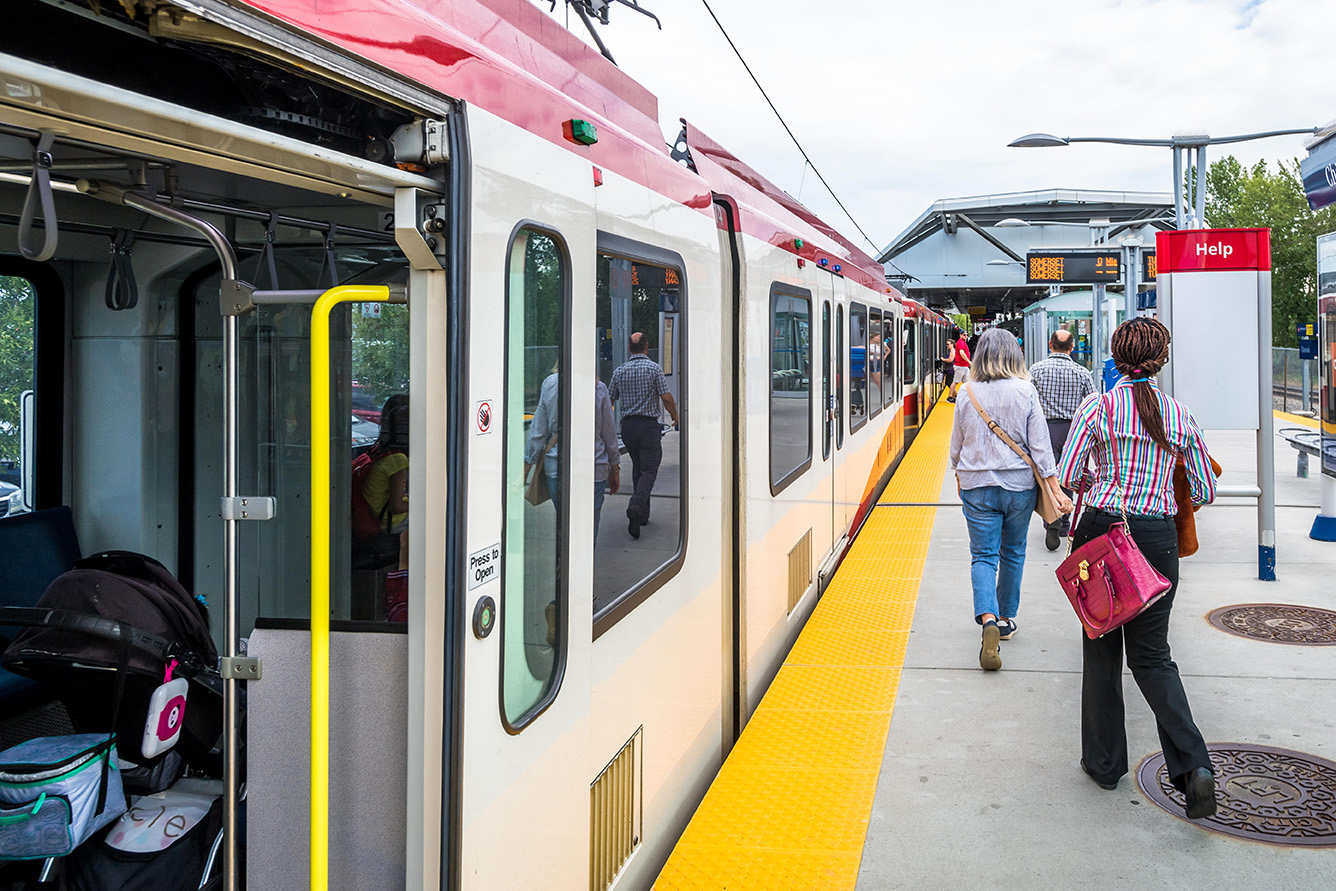
Increase transit ridership
- Upon opening, Phase 1 of the Green Line is expected to serve up to 55,000 daily riders.
- The Green Line will attract up to 18,000 new transit customers and increase total Calgary Transit LRT network boardings by 13.5%.
- Phase 1 will generate approximately 30% new transit riders from a combination of new trips made and changing travel choices.
Providing capacity for today and for the future
- The Green Line will operate two-car trains at five-to-eight-minute frequencies during rush hour.
- As demand and ridership grows, the frequency of service can be increased.
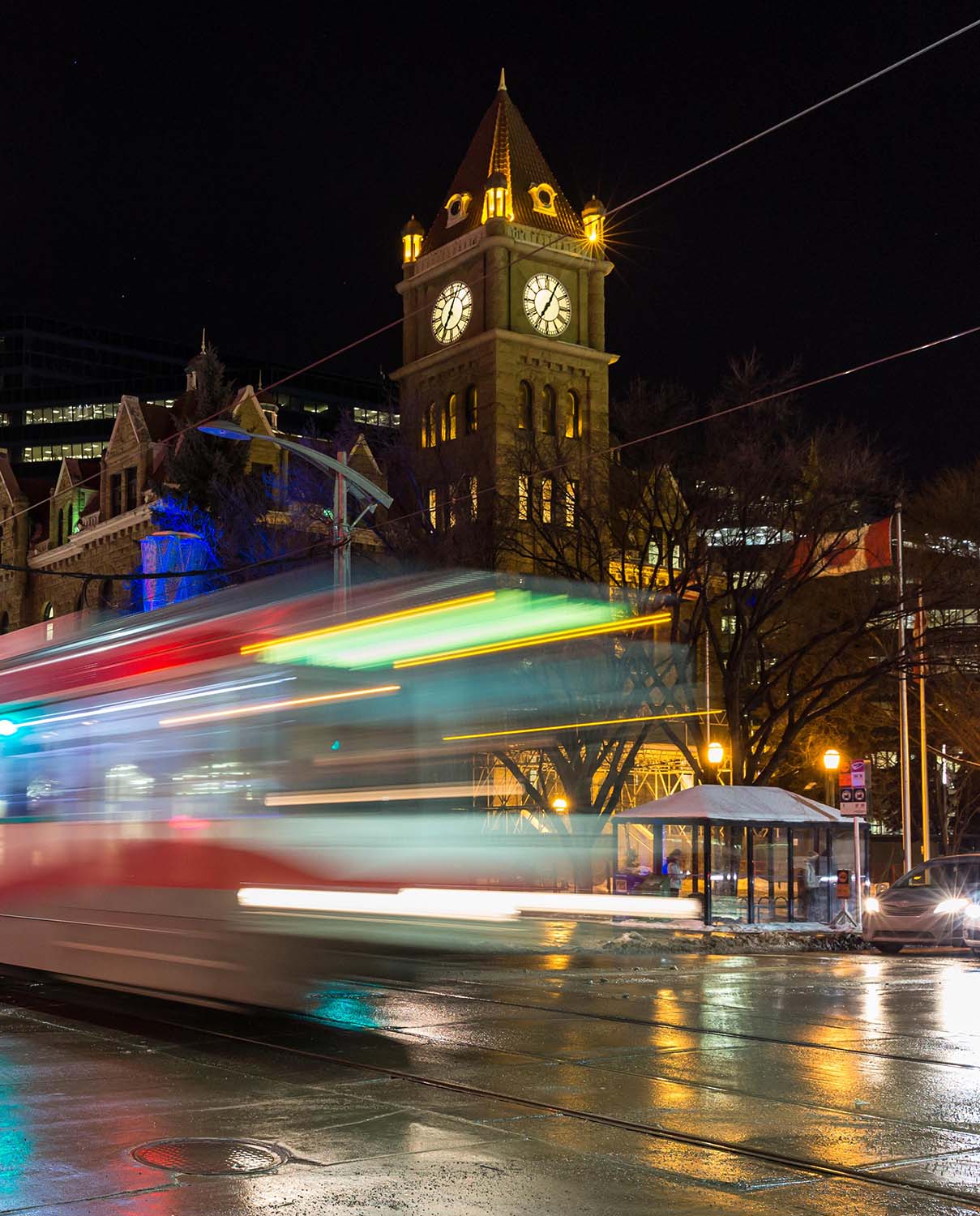
Faster travel times
- Riders using the Green Line from Shepard Station to downtown could save up to 25 minutes as compared to existing bus service in the southeast.
- Example journey on the Green Line
(Douglas Glen to 7 Avenue S.W.)- Current bus: 55 - 60 minutes
- Current drive: 30 - 40 minutes
- Future Green Line: 30 - 35 minutes
Reduce congestion
- Green Line will reduce overcrowding on the Red Line by providing direct LRT service to residents in southeast Calgary.
- Drivers using Deerfoot Trail or other major roads could save up to 10% of their commute time due to reductions in road congestion.
- Without Green Line, a new 7-lane expansion to Deerfoot Trail would be required to accommodate future population growth.
Environment and health
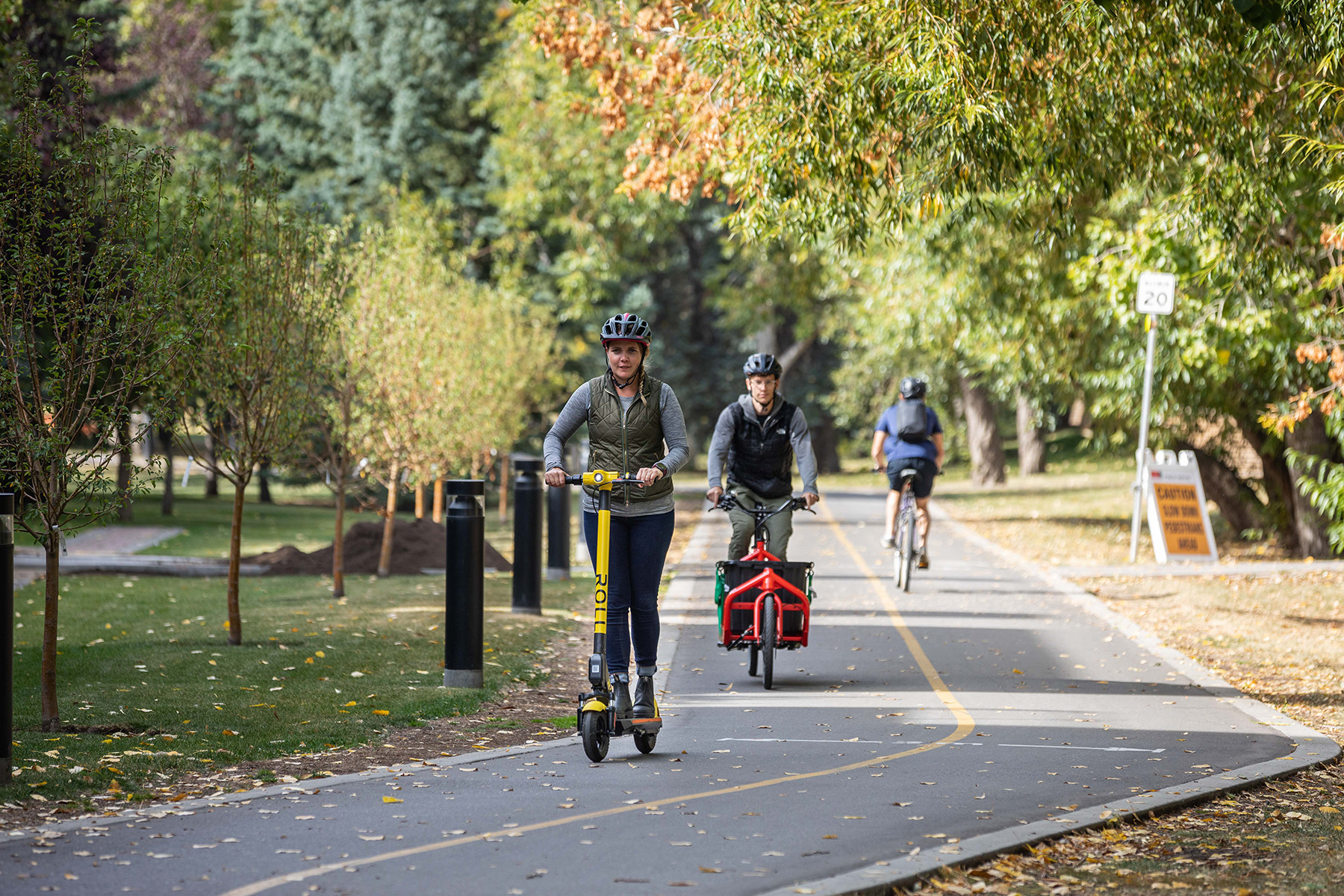
The Green Line LRT will allow Calgary’s transportation network to move more people, emit fewer greenhouse gases and use less energy and resources than we do today.
Walking and pathways
- On average, transit users walk more than drivers. This provides a net health benefit to individuals and our community.
- Multi-use pathways will be built along or near Phase 1 of the alignment, making it easier and safer to walk or wheel to LRT stations.
Safety
- With more people taking transit, a reduction in auto collisions is expected, which means reduced deaths, injuries, property damage and insurance claims.
- Green Line’s station infrastructure will make walking to stations easy, safe and convenient.
Reducing Greenhouse Gases
- Each year the Green Line will shift 4.8 million trips from vehicles to transit, reducing greenhouse gases by 26,750 tonnes.
- Light Rail Transit (LRT) is energy efficient. At maximum passenger capacity, the LRT is 58 times more energy efficient that driving.
- 18 passengers riding on a light rail vehicle is the “break even” point for LRT to save energy compared with 18 automobiles.
Economy and jobs
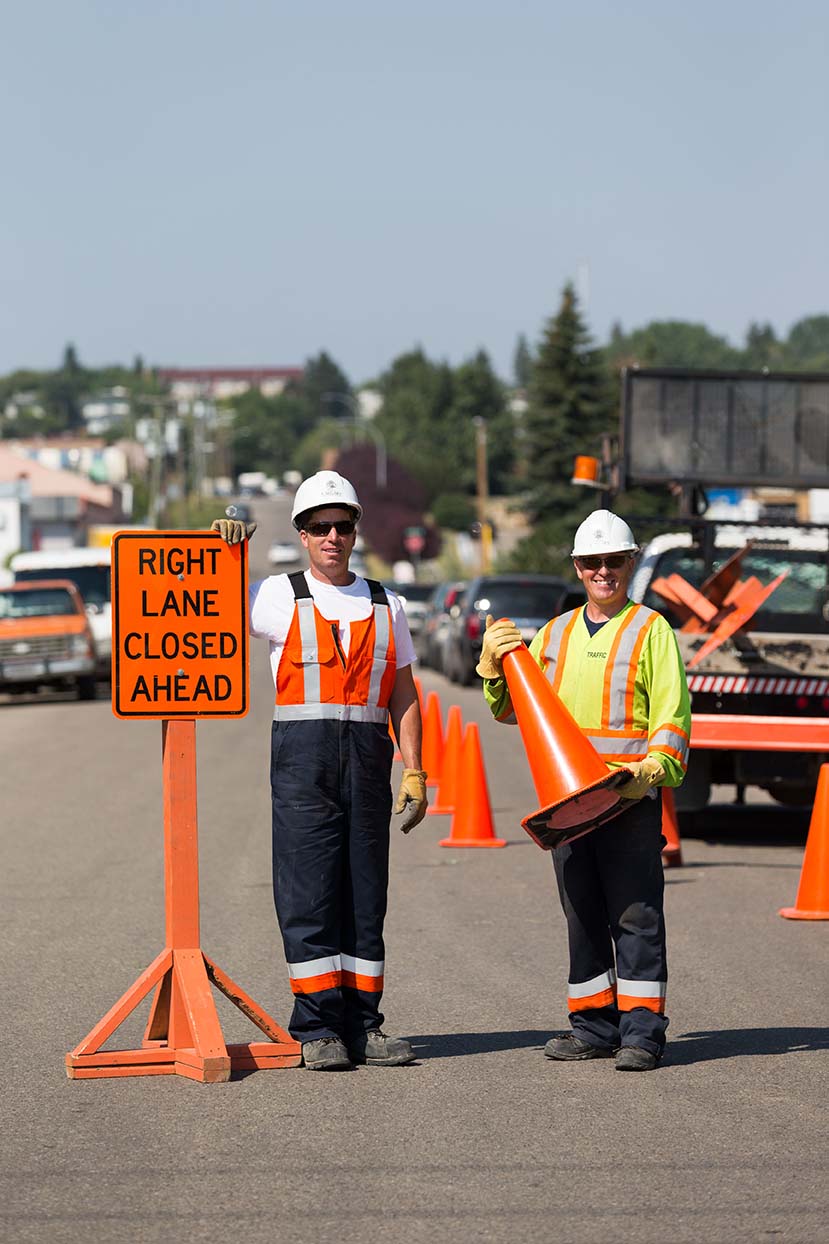
Jobs
- Building Phase 1 will create 20,000 direct and indirect jobs.
- During peak construction, it’s estimated that 1,000 workers are needed per day.
- Green Line will connect Calgarians to 190,000 jobs within walking distance to stations.
Attracting new talent and business
High quality transit is a necessity for cities to:
- Grow the population and economy.
- Be attractive to entrepreneurs and a talented workforce.
- Be competitive economic centres locally and internationally.
Transit-oriented cities draw higher concentrations of innovation, technology businesses and multi-national corporations looking for high quality labour.
Property value uplift
- The land value uplift on properties within 800m of Phase 1 stations is estimated to be $36B for public and private landowners.
- The estimated net new increase in tax is almost $122M annually.
Growth and accessibility
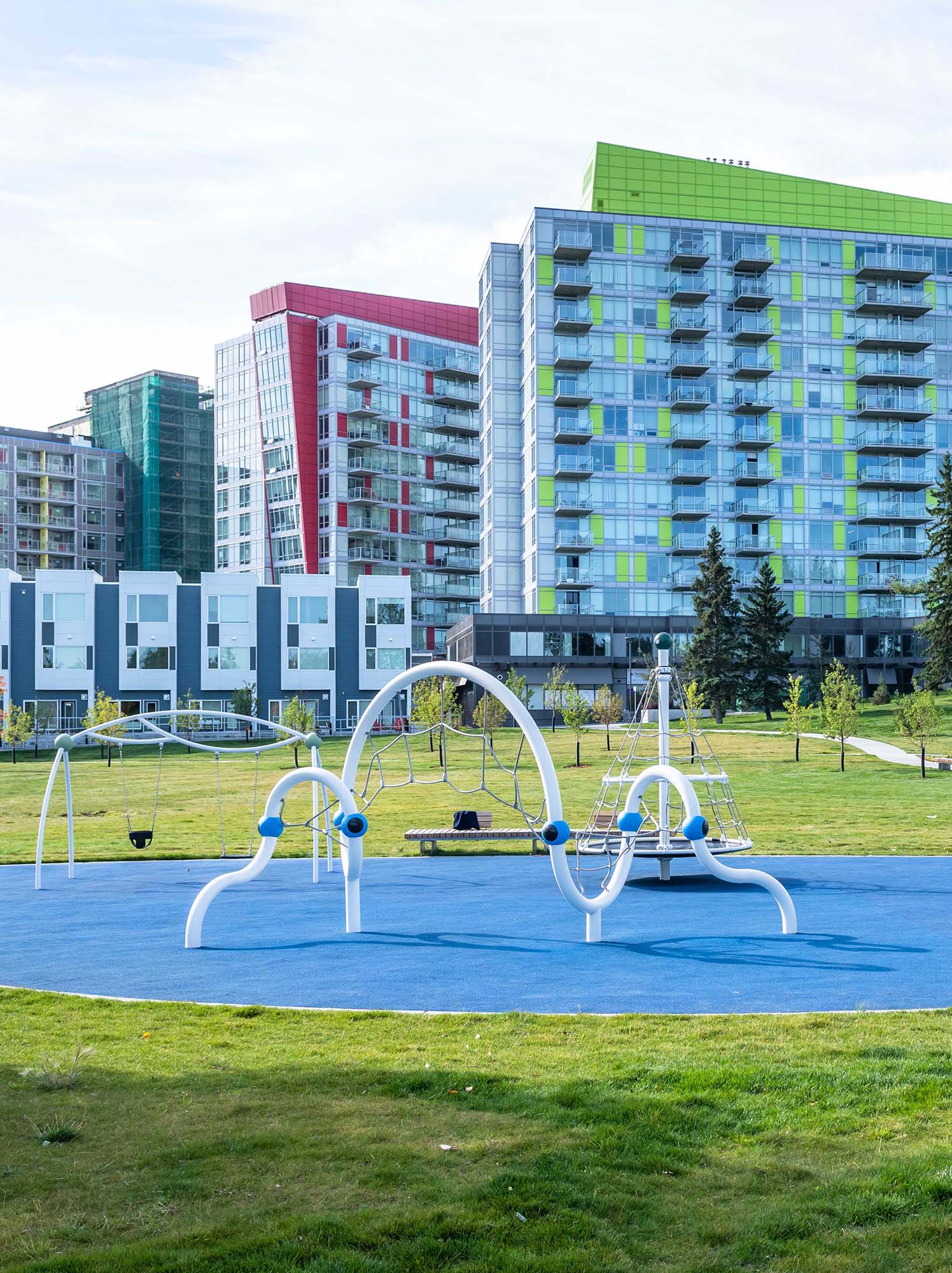
The Green Line LRT will spur new residential and commercial development, and provide much-needed rapid transit connections in the southeast.
Support mixed-development communities
- Green Line can help create high quality transit connections between communities and sites targeted for development in southeast Calgary.
- Green Line creates opportunities to construct 114,000 new housing units within 800 metres of stations and other transit-oriented development.
- Green Line station locations were chosen and planned based on future development potential. Visit our Transit-Oriented Development page for details.
- Transit stations can help accelerate development of nearby residential, retail and office sites.
Accessibility
- Southeast Calgary is currently underserved by rapid transit, limiting accessibility for transit users in this area.
- 70,000 people live within a 10-minute walk of Green Line stations.
- 190,000 people live within a 10-minute bike ride of Green Line stations.
- Green Line stations can be integrated with residential and commercial developments and communities, making them easier for more people to access.
- Green Line riders will be able to connect to schools, employment hubs, cultural and recreation facilities and much more.
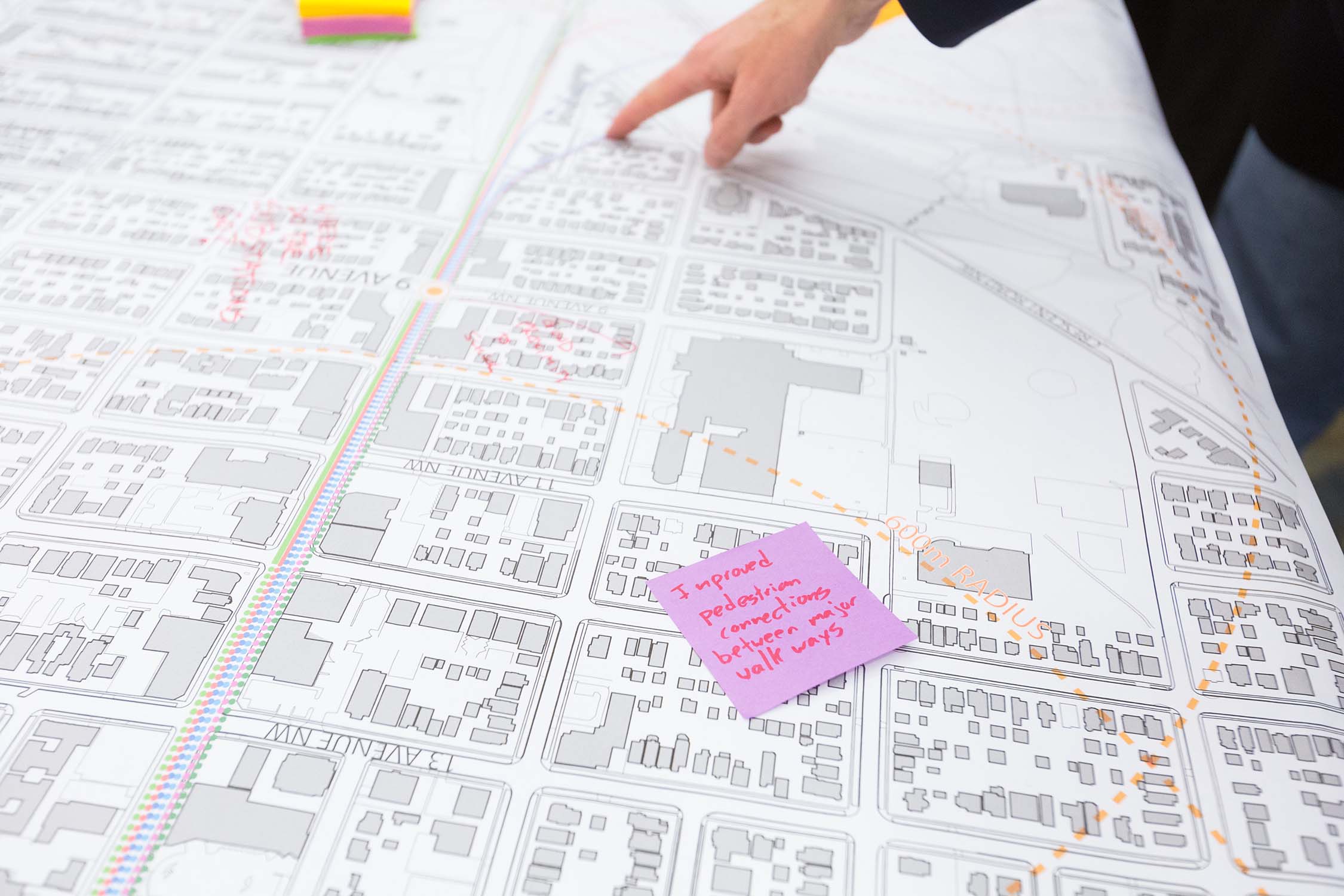
History
The story of the Green Line LRT has evolved over time with engagement and input from Calgarians throughout.
The need for a Light Rail Transit (LRT) line in the southeast has been under consideration by Council since the mid-1980s as communities in the area developed quickly and continue to grow. Rapid transit was envisioned for the north as early as 1967, and Centre Street N. has the busiest Bus Rapid Transit (BRT) corridor in the city.
Planning for Green Line as we know it today began in 2011. See the key milestones, public open houses and engagement sessions that helped shaped the project over time.
Browse the Project Timeline below.
Project Timeline
2025
Groundbreaking (June)
On June 26, 2025, after more than a decade of planning, we celebrated the official groundbreaking for the SE Segment and kick-off for Phase 1 of the Green Line LRT.
Funding confirmed and project moving ahead (March)
On March 18, 2025, the Government of Canada approved the revised business case for the Green Line LRT project. Funding is now confirmed from all three levels of government (municipal, provincial, and federal) and the project can move forward with construction of the SE Segment beginning in 2025.
City Council votes yes on the Green Line LRT (January)
On Jan. 28, 2025, City Council voted yes to starting construction on the SE Segment of the Green Line and beginning work on a Functional Plan for the Downtown Segment.
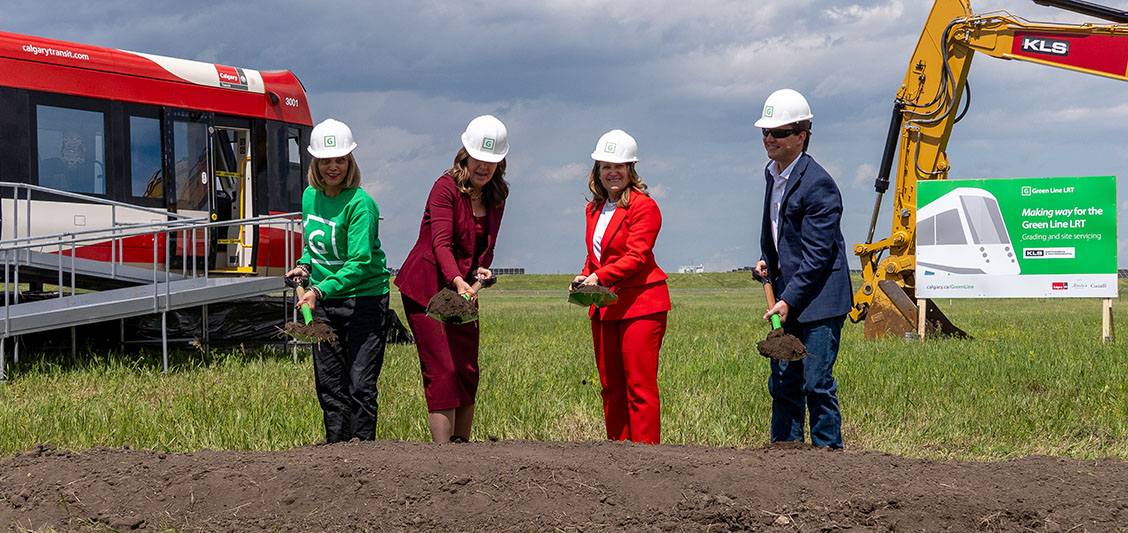
2024
Province releases alternative alignment for downtown (December)
On December 13, 2024, the Province of Alberta submitted their report on alternative alignments for the downtown to The City. Their report is available to view here.
Southeast design information sessions (November)
Green Line hosted three public information sessions to share the 60% design for southeast stations between Ramsay/Inglewood and Shepard.
Green Line Board and CEO depart; project transferred to The City (October)
Green Line announced on October 29, 2024, that the Board had concluded their mandate and transferred responsibility of the Green Line LRT Program to the City of Calgary. Darshpreet Bhatti, Green Line CEO, also shared that he will leave the project.
City and Province announce some work continues on Green Line (October)
On October 10, 2024, the City and the Province announced that an agreement had been reached to continue with some aspects of the Green Line LRT project.
City Council approves project wind-down (September)
On September 17, City Council approved a wind down of the project as The City was unable to continue without Provincial funding.
Province of Alberta withdraws funding for Phase 1 (September)
On September 3, the Province of Alberta withdrew their funding of Phase 1 of the Green Line, citing concerns with the proposed tunnel under downtown and the reduced benefits and ridership of the shortened line.
Green Line approved with revised route, budget and delivery model (July)
Calgary City Council approved a revised Green Line Phase 1 project scope, capital funding request and delivery model, as recommended by the Green Line Board. The revised route was a shortened line with fewer stations due to cost inflation pressures. The intent was to build the core from Eau Claire to Lynnwood/Millican first, as it was the most costly and complicated section with a tunnel and two underground stations downtown. From there, extensions north and south could be added as funding became available.
60% design submission completed by Development Partner (June)
Design elements were explored in more detail, including the materials that will be used and an analysis of the constructability and cost effectiveness.
Demolition of Lilydale Poultry Plant completed (May)
The Lilydale Poultry Plant in Ramsay was demolished to make way for the Green Line LRT route near 11 Street S.E. in Ramsay. It included hazardous material abatement, building demolition and site clearing. The location will be used as a laydown area for construction of nearby stations and track.
Green Line confirmed Q4 2027 as the LRV Delivery Commencement Date for the first LRVs to be delivered to Calgary (February)
Manufacturing of the Urbos 100 Green Line trains, by Construcciones y Auxiliar de Ferrocarriles (CAF) a Spanish train manufacturer, is expected to begin in 2025. Delivery of the vehicles on order with be staggered over one to two years.
30% design submission completed by Development Partner (January)
Major design elements, risks, the construction schedule and costs established to form the baseline of the project.
2023
Green Line begins to demolish Lilydale Poultry Plant (October, November)
Green Line began the demolition of the Lilydale Poultry Plant to make way for the Green Line LRT. This was the first major piece of construction work in Ramsay. A community event was held on November 8 to watch the first wall get torn down.
First groundbreaking for Green Line’s Public Gardens Initiative (August)
The redevelopment of George Moss Park in Ogden is a significant step towards creating inclusive and vibrant public spaces along the Green Line. This is the first of a minimum of six outdoor community spaces that will be located within 500 metres of future Green Line stations.
Construction begins on 78 Avenue Project in Ogden (July)
Following evaluation of the RFP, the Green Line Board selected Graham Construction to build the 78 Avenue Project. Before building the Ogden LRT station and tracks, the 78 Avenue Project will complete vehicle and pedestrian tunnels under the Canadian Pacific Kansas City Railway (CPKC) corridor to enhance mobility and pedestrian safety around the future Green Line LRT Ogden Station.
Development Partner selected (April)
Following a successful procurement, the Green Line Board approved the Development Phase Agreement and selected Bow Transit Connectors (BTC) as Green Line’s Development Partner. This announcement launched the Development Phase, which allows for collaboration, design progression, and agreement on project costs, risks, and overall schedule between Green Line and BTC, before signing a Project Agreement.
Land acquired for Eau Claire Station (January)
The Green Line Board and City of Calgary reached an agreement in principle with Harvard Developments to acquire the land for the future underground station at Eau Claire. This station is both the temporary terminus for Phase 1 of the Green Line LRT, from Shepard to Eau Claire, and serves as the future connection between the north and south legs of Green Line.
2022
Light Rail Vehicle (LRV) mock-up (November)
Green Line received a mock-up of its new low-floor LRV. The mock-up will be used to validate Green Line’s technical requirements and ensure accessibility, and will eventually become a training simulator for future transit operators.
Delivery Partner selected (November)
Following a Request for Proposals evaluation, CSIX Partners was selected as the Delivery Partner. They will supplement the Green Line team in support of delivering Phase 1 (Shepard to Eau Claire) across a range of project functions, including commercial management, technical support, project controls and construction management.
Green Line hosts Business Information Session (November)
An information session was hosted to introduce Calgary’s local contractors, suppliers and trades to the two proponent teams competing to design, build and construct Phase 1 of the Green Line LRT.
Request for Proposals issued for Phase 1 (September)
The Request for Proposals (RFP) was released to select a proponent to design, construct and finance Phase 1, from Shepard to Eau Claire, of the Green Line LRT. The RFP was released to the two proponent teams, Bow Transit Connectors and City Link Partners, who were short-listed through the Request for Qualifications stage.
Two proponent teams selected (July)
Following the Request for Qualifications (RFQ) for construction of Phase 1, from Shepard to Eau Claire, the Green Line Board approved two proponent teams, Bow Transit Connectors and City Link Partners, to advance to the Request for Proposal (RFP) stage.
Request for Qualifications released for Phase 1 development (March)
Green Line released the Request for Qualifications (RFQ) for construction of Phase 1, from Shepard to Eau Claire. The RFQ creates a short-list of candidates, from which a Development Partner can be selected to build Phase 1 of the Green Line LRT.
2021
Contract awarded for Light Rail Vehicles (LRVs) (November)
The Green Line Board and The City selected CAF (Construcciones y Auxiliar de Ferrocarriles) as the supplier of our new fleet of LRVs for the Green Line LRT Project. The contract includes 28 modern low floor LRVs.
New Green Line CEO (August)
The Green Line Board appointed Darshpreet Bhatti as CEO of the Green Line LRT project effective August 16, 2021.
Federal Government support announcement (July)
Prime Minister Justin Trudeau reconfirmed federal support of the Green Line LRT project and the redefined procurement strategy at an announcement in Calgary along with the Mayor and members of Calgary City Council.
Government of Alberta approves Green Line LRT project (June)
Following an extensive review of the overall Green Line LRT project, the Government of Alberta approved the redefined procurement strategy and federal funding business case that was submitted to the province on May 28, 2021.The Green Line will be constructed through a new phased approach, with the first phase building the LRT from Shepard to Eau Claire.
Segment 2 Functional Plans (May)
The updated Segment 2 Functional Plan was presented to the Green Line Committee on May 19, 2021 and was approved. The plan included:
- Functional plans for Beltline and Downtown and the Bow River bridge
- Crescent Heights plans
- Findings from North Central Mobility and Bus Rapid Transit (BRT) studies
Beltline and Downtown Utility Relocation Project (May)
The project to relocate utilities in east Beltline and Downtown started. This project will make way for the main alignment construction of the tunnel, track and stations.
Segment 2 Engagement (January to April)
A variety of virtual engagement opportunities were conducted to help inform functional planning for project areas in segment 2 (4 Street S.E. to 16 Avenue North):
- Downtown and Beltline
- Crescent Heights (Streetscape Masterplan for Centre Street North and Crescent Heights Mobility Study)
- North Central Mobility and Bus Rapid Transit (BRT) Studies
- Bow River LRT bridge
Green Line Board (January)
The City announced the Green Line Board, comprised of nine members, who will govern, oversee and deliver the Green Line LRT project.
2020
Online engagement helped develop a Business Support Program. The goal is to help businesses and communities prepare for and manage the potential impacts of construction. A Business Insights Panel was recruited to advise on and share insights from the business community.
Transit-Oriented Implementation Framework (November)
The TOD Implementation Framework received the Outstanding Planning for Human Settlements/Plan Making from the Commonwealth Association of Planners.
Council approved the Green Line governance structure (July)
Council approved the updated Stage 1 alignment (June)
Updated Alignment engagement (January to April)
Interest holders discussed challenges with the proposed Bow River tunnel and alignment changes. The Stage 1 alignment was updated to replace the tunnel with a bridge. The decision was made to construct Stage 1 in three segments:
- Segment 1: 126 Avenue to Elbow River
- Segment 2A: 2 Avenue S.W. station to Elbow River
- Segment 2B: 16 Avenue N. to north of 2 Avenue S.W. station


2019
Transit-Oriented Development (TOD) Implementation Strategy (December)
The TOD Implementation Strategy enables TOD to thrive in Calgary. It identified four key actions:
- Complete station area reviews
- Develop funding and investment tools
- Support the TOD policy
- Foster collaborative partnerships
Council approved the contracting strategy (July)
Notice of Motion to form an informal Public Gardens Committee (July)
They will explore a modernizing traditional Railway Gardens and the feasibility of using the Public Art budget to integrate art as part of the public gardens.
Public Gardens Scoping Report (April)
An informal Steering Committee helped develop a Public Gardens Scoping Report that sets a vision for:
- Adding greenery along the Green Line
- Promoting art
- Educating citizens
- Creating outstanding public spaces
Council approved development of a master plan for six public garden projects. These projects were based on the historic railway gardens concept.
Funding agreement signed by the Government of Canada, the Government of Alberta and The City of Calgary (January)
2018
Government of Canada announced $1.53B funding commitment. (May)
Green Line in My Community (GLIMC) engagement (January to February)
GLIMC open house and pop-up sessions gathered input on station designs:
2017
The Integrated Transportation and Land Use Planning approach was shared at conferences in Canada, United States and Singapore. (2017)
Government of Alberta announced $1.54B funding commitment (July)
Green Line Urban Integration (GLUI) framework (June)
A 3-volume GLUI framework was developed that:
- Sets guiding principles for how the Green Line LRT will fit within the community
- Describes the look and feel of the LRT environments
- Details how to apply the urban integration framework
- This framework will be used by contractors building the Green Line.
City Shaping Framework (June)
City Shaping is Layer 4 of the Green Line planning approach. The City Shaping framework outlined:
- Guiding principles
- Potential actions to improve quality of life for communities along the Green Line
Framework for Transit-Oriented Development (TOD) Implementation Strategy (June)
The TOD Implementation framework outlined the proposed approach and outputs for the strategy. Among the nine objectives was a City-wide perspective on TOD implementation that was adopted as part of The City’s TOD Program (presented to Council in 2019).
Council approved Green Line LRT alignment and stations (160 Avenue N. to Seton). (June)
Beltline Alignment engagement (May)
Engagement sessions were held on four alignment options for Victoria Park. The transition to 10 Avenue S.E. was selected to connect the Beltline to the Ramsay/Inglewood Station. This addressed traffic concerns and minimizes impacts to residential communities.
Green Line LRT report (May)
The Building the Core report established 126 Avenue S.E. to 16 Avenue N. as Stage 1. This met criteria like:
- Interest holder preparedness
- Sufficient functional and initial designs
- Procurement strategy aligned to the project objectives
Green Line in My Community (GLIMC) engagement (March)
Citizens attended events for the north, southeast, City Centre and Beltline alignments and gave insight into:
- The thoughtful integration of Green Line into communities
- Plans to improve community livability
Refinement engagement
Input gathered through GLIMC engagement was used to help refine various aspects of Green Line, like:
- Land use planning
- Alignment


2016
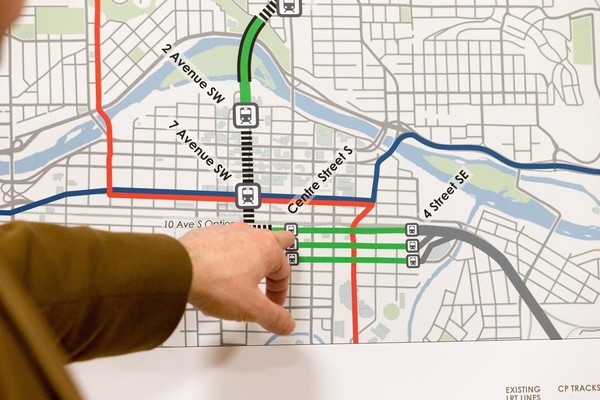
Centre City and Beltline engagement
Feedback was collected to evaluate the Centre City and Beltline routes. This helped City Council decide to build a tunnel through this section of the alignment. In December, route options were narrowed through the Beltline to the 12 Avenue S. corridor.
Transit-Oriented Development (TOD) Background Research – North
Green Line reviewed City policies, North American TOD best practices and conducted a GIS analysis of existing conditions and land use, which was used to help prioritize site selection.
Transit-Oriented Development (TOD) Market Analysis – North
Green Line estimated the long-term demand for different types of housing and office space. Implications for TOD options were identified along different parts of the corridor.
Green Line Speaker Series (June to October)
Four sessions shared Green Line’s innovative approaches to:
Transit-Oriented Development (TOD) Charrettes – North (April to October)
Three charrettes were held around development of Station Area Concept Plans for the north alignment:
- 64 Avenue N. station
- 40 Avenue N. station
- Along the corridor for 9, 16 and 28 Avenues.
The concept plans were used to develop Station Area Plans, Local Area Plans and Area Redevelopment Plans.
Refinement engagement – North (March to June)
Workshops were held in northern communities. Feedback showed how the Green Line could help:
- Build community
- Protect local businesses
- Optimize station locations
- Enable pedestrian and cycling access
- Deal with safety, traffic and parking issues
Inglewood & Ramsay Area Redevelopment Plans (February to April)
The engagement results from the Green Line S.E. charrettes in 2015 were used as a basis for the Area Redevelopment Plans (ARP) for the Inglewood/Ramsay and 26 Avenue station areas. A public open house was held on February 10, and an information café was held on April 28.
2015
Notice of Motion for municipal commitment ($52 million for 10 years) to be extended to a 30-year period. (December)
The new total funding commitment would be $1.56 billion. This decision was based on the federal government pledge through the Public Transit Fund. It relied on a provincial government funding commitment that was confirmed in 2017.
Transit-Oriented Development (TOD) Charrettes – Southeast (June)
Three charrettes were held around TOD options and development concepts for five stations:
- South Hill
- Ogden
- Lynnwood/Millican
- 26 Avenue S.E.
- Ramsay/Inglewood
Citizen input helped clarify the scale and type of development for each station. Community issues and goals were worked into the conceptual designs, initial concepts and preferred development plan.
Green Line Southeast Public Engagement Workshop (June)
Local residents shared their concerns and desires for the station area regarding existing community connectivity and area improvements.
Notice of Motion to outline the project delivery model for the Green Line LRT. (May)
Council approved the route of the North Central LRT on Centre Street North. (January)
Green Line Southeast Transitway Project – Public Information Sessions (January)
Three public information sessions were held for the Green Line Southeast Transitway Project. The purpose of these sessions was to inform citizens about the upcoming engineering and design work to be done, land use studies to be conducted, and outline how interested citizens can be involved in the process.


2014
Alignment Development engagement
Citizens in southeast and north Calgary were targeted for feedback on potential routes. This led to refining the southeast route and choosing the Centre Street N. alignment.
Transit-Oriented Development (TOD) Background Research – Southeast
Green Line reviewed City policies, North American TOD best practices and conducted a GIS analysis of existing conditions and land use, which was used to help prioritize site selection.
Transit-Oriented Development (TOD) Market Analysis – Southeast
Green Line estimated the long-term demand for multi-family housing. Potential for new office space and TOD was identified along the corridor.
Notice of Motion to conduct TOD scoping and planning with the pre-design process and community-based visioning. (March)
2013
North Central Route planning engagement (June)
675 participants attended public engagement. They identified community traits and values based on feedback from 2011. They also reviewed alignment options and benefits of low floor Light Rail Vehicles (LRVs).
2012
North Central LRT Alignment and Transit-Oriented Development (TOD) (March)
The North Central Planning Study looked into land use planning for TOD from 2012 to 2014. It showed communities would be better served if the North Central LRT was more centrally located. This would provide more options for TOD than the Nose Creek Valley alignment.
2011
Nose Creek, Edmonton Trail, Centre Street N. alignment engagement (May)
Around 2,150 Calgarians attended open houses. They explored the concept of an LRT line along Nose Creek, Edmonton Trail or Centre Street N. A new planning study determined a route based on a Centre Street N. or Edmonton Trail alignment.
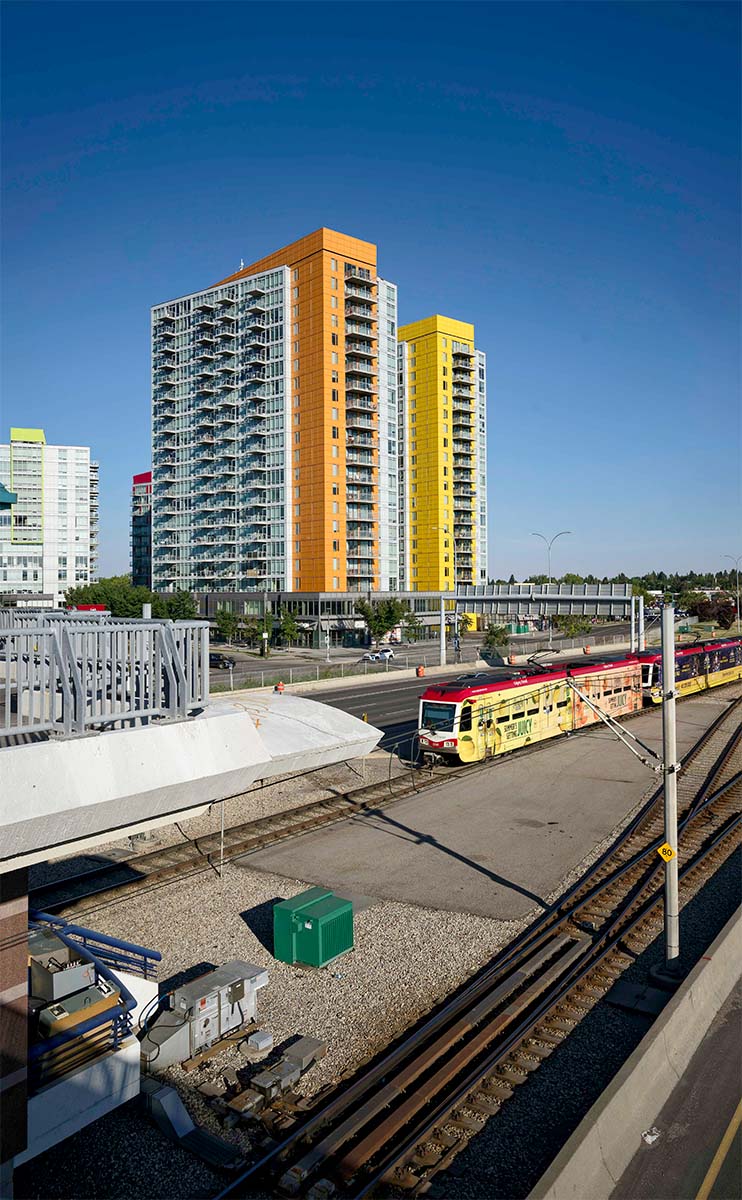
Transit-Oriented Development
What is Transit-oriented development (TOD)?
Transit-oriented development (TOD) is the planning, design and building of development centered around rapid transit stations.
A key benefit of the Green Line LRT is creating high quality transit connections between communities and areas targeted for development in southeast Calgary. Projects like the Green Line LRT can be a stimulus for increased development, by increasing the total volume of development, or accelerating new development along the route.
Development near rapid transit stations often incorporates amenities including restaurants, shops, offices, parks and entertainment within walking distance. This enhances the overall quality of life by providing easy access to destinations, local shops and businesses and community spaces to connect with others.
Learn more about Transit-Oriented Development below.
Benefits of Transit-Oriented Development
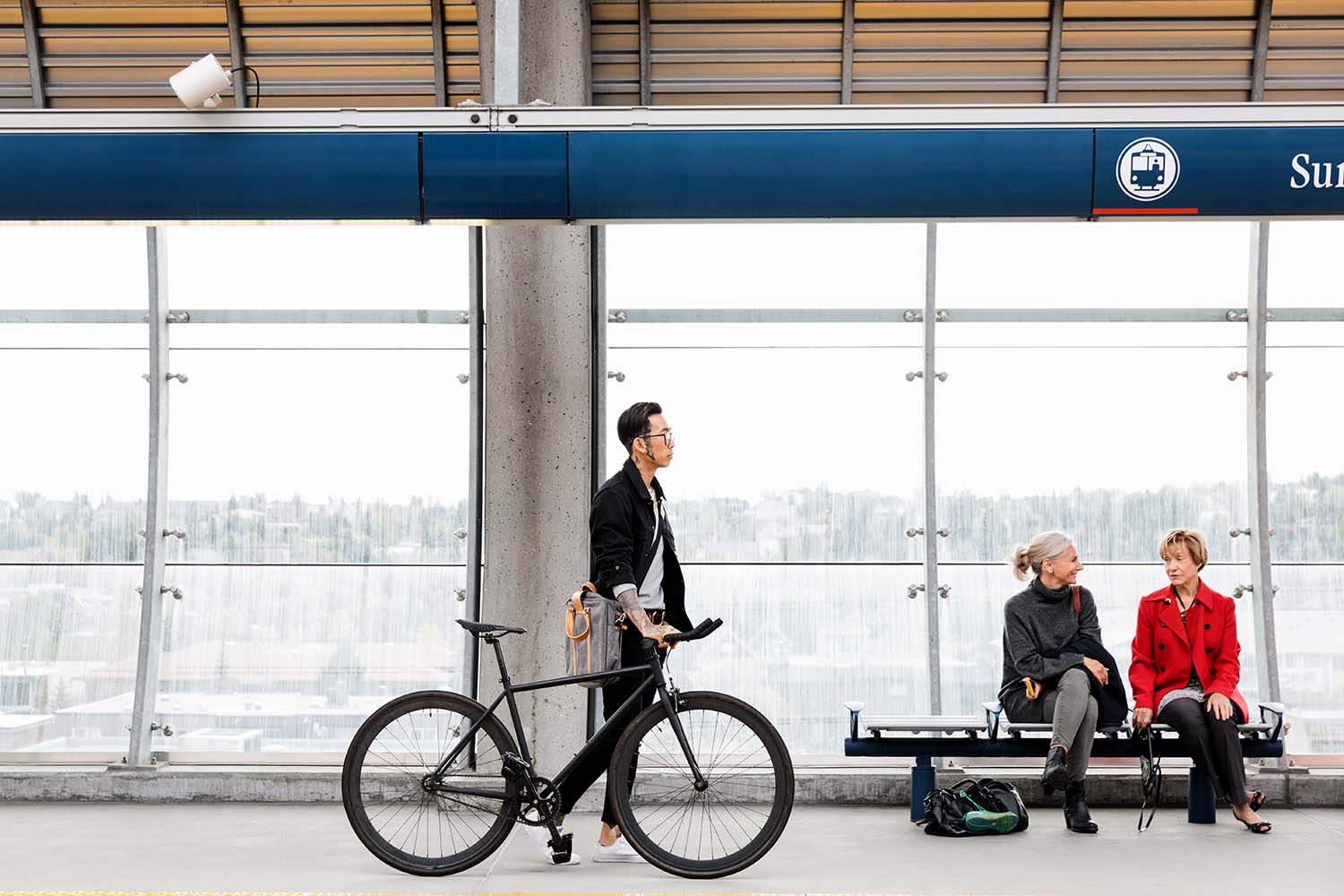
- Lower costs of living.
- Better access to jobs, recreation and education.
- More mobility and lifestyle choices.
- Healthier lifestyles (TOD promotes walking, cycling and transit use).
- Healthy and thriving communities.
- Local economic growth in communities.
- Less greenhouse gas emissions through less automobile use.
Developing Around Calgary’s Rapid Transit Hubs
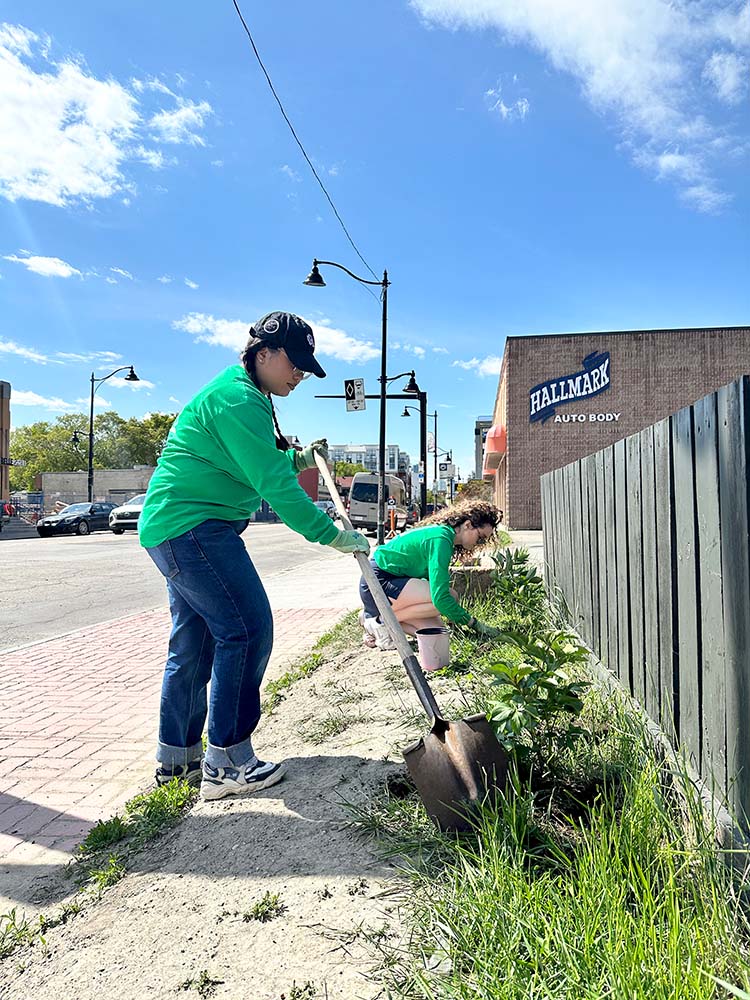
The City’s Municipal Development Plan (MDP) outlines the long-term growth plans for Calgary, which includes a focus on growing mixed-use, amenity rich communities with access to rapid transit.
The Green Line LRT stations and infrastructure are being designed to integrate into the community and support longer term regeneration. Developing the areas around future stations will be a collective effort between The City, private sector developers and interested parties.
Planning for Transit-Oriented Development
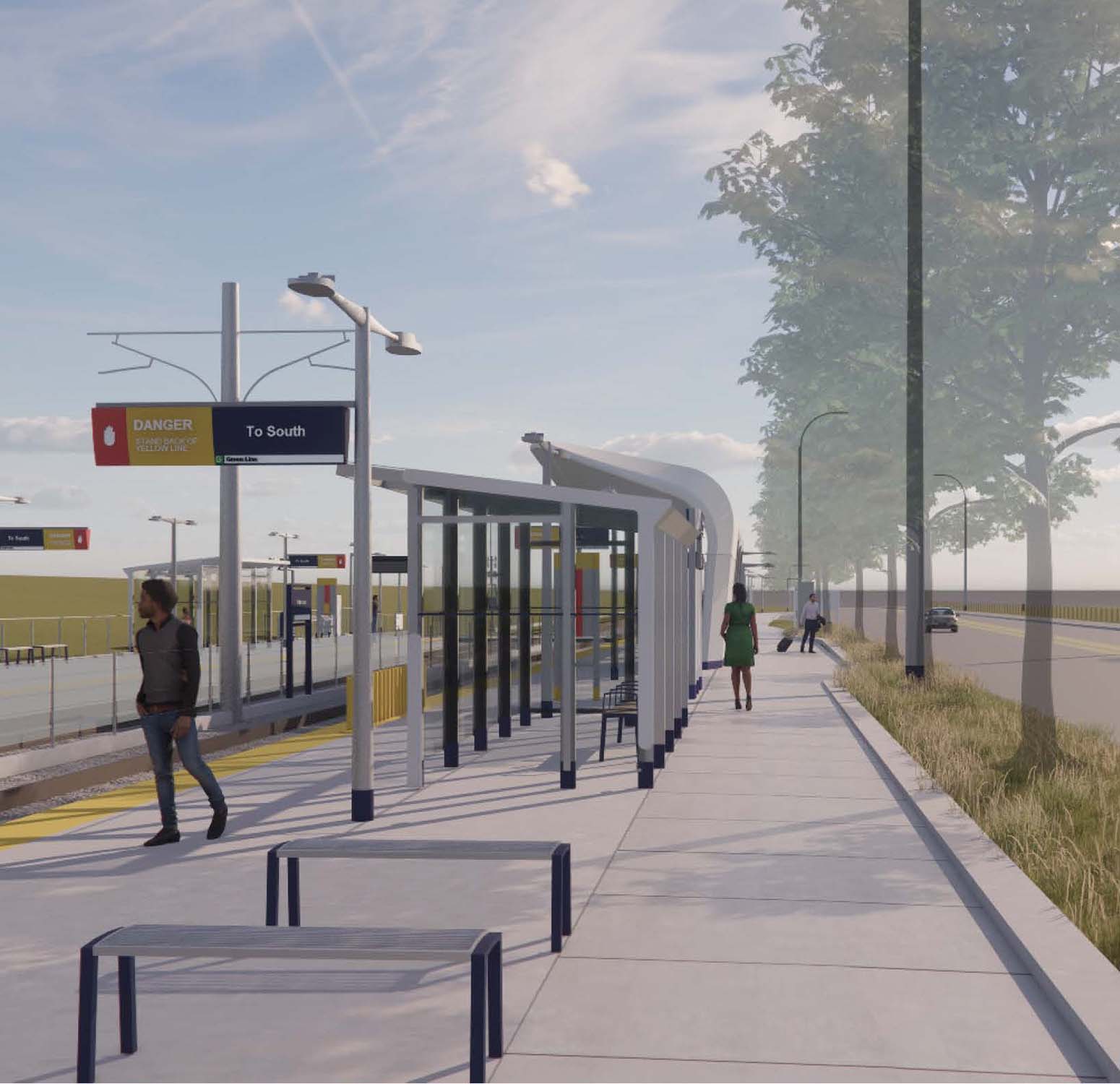
Extensive research was completed on development potential for Green Line stations. Transit-oriented development scoping and planning was conducted with Green Line’s pre-design process and community-based visioning.
Market analysis studies between 2014 and 2016 identified areas with the highest development potential. They focused on areas that could have multi-family developments and complete transit-oriented development by 2045.
Locations for future transit-oriented development along the Green Line were prioritized based on:
- Input from community members, developers and subject matter experts)
- Long-term development plans
- Geospatial data
- Market analysis studies
The Transit-oriented development (TOD) Implementation Strategy, approved by Calgary City Council in 2019, proposed a four-part action plan that included completion of a station areas evaluation.
Details on the strategy and how The City is working through those priorities can be viewed on the Transit-oriented development (TOD) Program page.
Four-Layer Planning Approach

The Green Line LRT was planned with a four-layer approach to ensure the proper investments are in place to support plans 50 years into the future.
Layer 1 and some items in Layer 2 will be delivered in Phase 1 construction. Layers 3 and 4 are part of a long-term vision for Calgary. They will take years to build out and require collaboration with other City departments, external partners, industry and the public.
Layer 1 - Transit Infrastructure
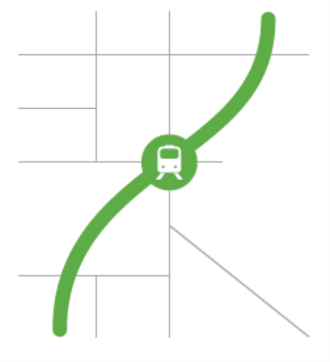
This layer plans for all the pieces required to operate the Green Line LRT. This includes:
- LRT track
- Transit stations
- Tunnels and bridges
- Light rail vehicles (LRVs)
- Overhead contact system (electrical and power structures)
- Station and passenger facilities (e.g. Park and Ride, passenger shelters, bicycle parking, bus terminals)
- Maintenance and Storage Facility (located at Highfield Station)
These items will be delivered in Phase 1 and will help lay the foundation for the other layers.
Layer 2 - Connection to Stations
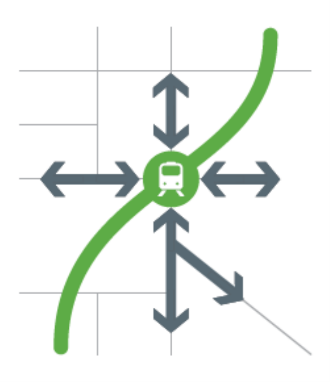
This layer plans for key infrastructure details around station areas. This includes:
- Improvements to pedestrian safety (pedestrian bridges, sidewalks, etc.).
- New multi-use pathways for pedestrians, cyclists, scooters and more to connect from where they live, work and play to Green Line stations.
- Support for alternative transportation modes to access the station (bike share, car share, e-scooters, etc.).
Some of these items will be delivered in Phase 1 and will help prepare for other layers.
Layer 3 - Transit-Oriented Development (TOD)
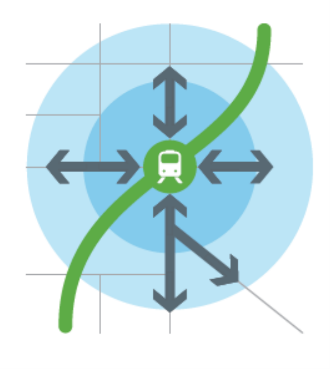
Transit-oriented development (TOD) is the planning, design and development of communities centred around rapid transit stations. It typically includes:
- Designs to encourage walking, cycling and transit use.
- Easy pedestrian connections to various destinations.
- A variety of residences, shops and services.
- Multi-story buildings for residents and businesses.
- Reduced need for high automobile use.
These items are part of a long-term vision for Calgary and will take time to build out.
Layer 4 - City Shaping
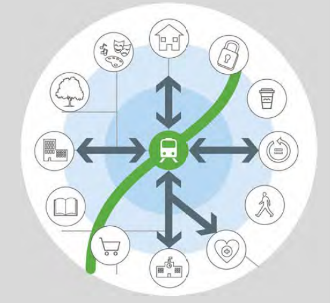
City shaping plans for the look, feel and function of our city. This layer looks at how the Green Line can be leveraged and transform communities 50 years into the future. The goals of the City Shaping Framework for communities along the Green Line are:
- Equitable and inclusive: affordable access to housing, transit, social and community services.
- Vibrant and thriving: access to cultural destinations, local spaces that foster cultural activities, and a connection to Calgary’s heritage.
- Safe and resilient: safe, protected and prepared.
- Healthy and active: physically active, good mental health and quality natural environments.
These items are a long-term vision and will take time to build out. Thinking about them now allows us to make sure future development is possible.
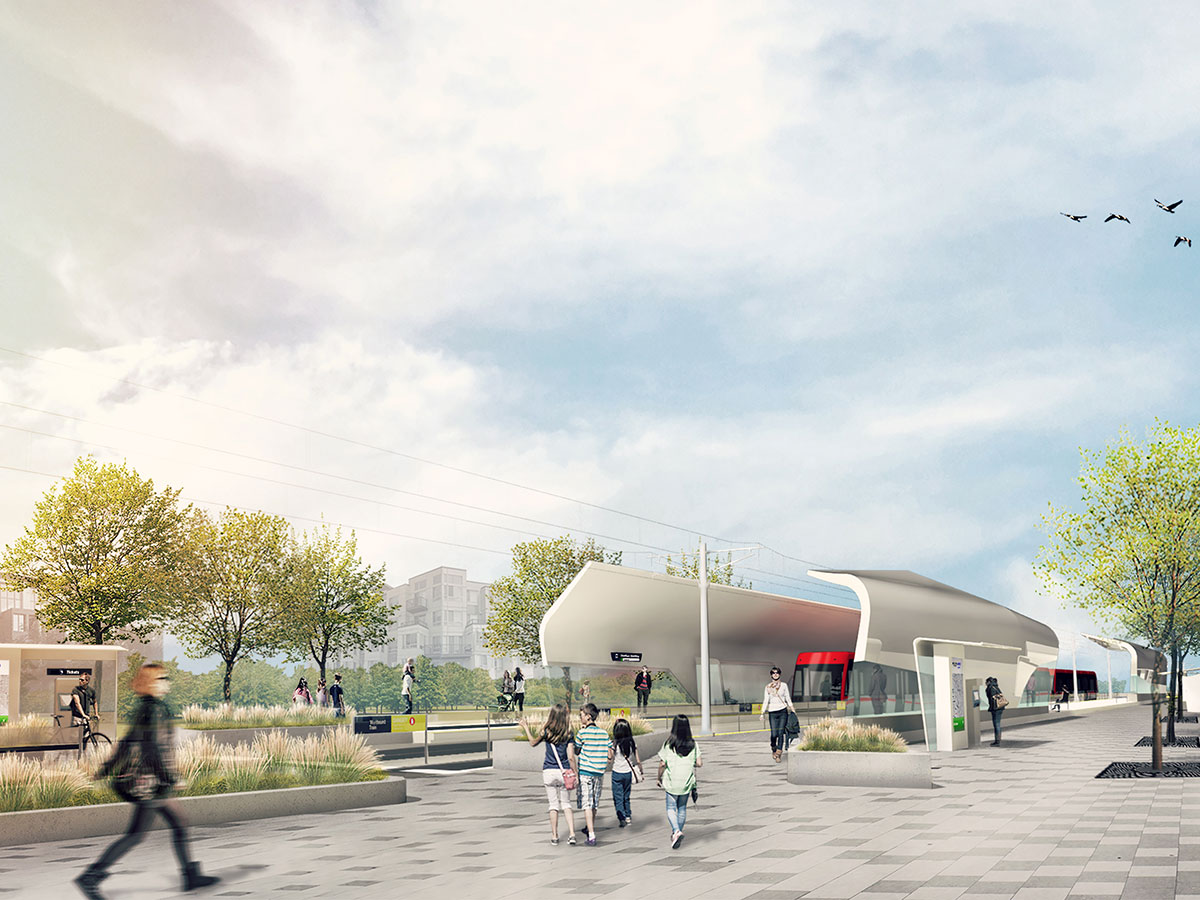
Calgarians Strongly Support Green Line
The City of Calgary's 2025 Spring Pulse Survey asked 2,500 Calgarians what they thought about Green Line.
- 83% agree that the Green Line LRT will enable Calgarians to better connect with people, places and services
- 86% agree that the Green Line LRT will be an important addition to Calgary's transportation network

